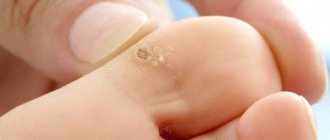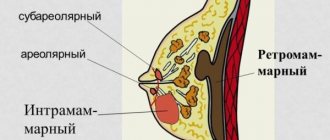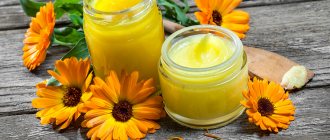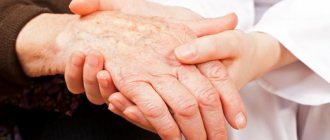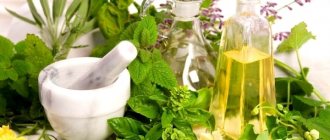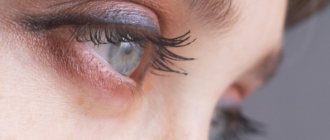The effectiveness of using folk remedies
The appearance of warts is associated with the penetration of papillomavirus into the body, expressed by increased cell division.
With a strong immune system, the disease may not manifest itself, but the body’s weak defense activates the virus.
Warts and papillomas begin to form on the body, varying in size, occupying any area of the skin. At first there may be isolated formations, but without proper treatment papillomatosis develops, covering more healthy skin. Warts are benign in nature, but can accompany a malignant tumor, regardless of where the cancer develops: on the skin or in internal organs.
When deciding to remove warts using traditional methods, it is advisable to undergo an examination, consult a doctor and confirm the benignity of the formation. Using the right folk recipes, the treatment will go smoothly and without problems. Thanks to the natural composition of the components, the effect will be soft and painless. The products use plants that have antibacterial, disinfectant, healing and immune-stimulating properties.
Removing growths using traditional methods is effective, but requires more time and effort.
Do warts need treatment?
It is necessary to remove warts if they are constantly injured by underwear, a comb, or affect a person’s appearance. Modern clinics use different techniques for treating keratoma: laser, liquid nitrogen and electrocoagulation. In this case, no traces are left on the skin.
The main causes of concern are an increase in the size of the tumor, the appearance of bleeding or pain. In this case, you should contact an oncologist and undergo additional examination. A biopsy is usually not necessary because warts are generally benign.
Doctors do not recommend removing senile warts without special reasons, since roots may remain at the site of their removal and tumors may grow again.
When growths appear, you need to follow the rules of hygiene and monitor their condition. It is advisable to protect yourself from sunlight, sudden lesions, and removing crusts and scales from warts. The roughness of the new growth can be removed by spreading it with sunflower oil. But this method cannot be used if the keratoma is damaged, as inflammation will appear.
Traditional medicine in eliminating keratomas
Many people use folk remedies, but experts advise first undergoing an examination to determine the rationality of any method.
Some patients use celandine juice to treat warts, but it is undesirable to use pharmaceutical tincture due to its high concentration. It may be possible to remove the keratoma, but a scar will remain in the area where it is located, which will require you to seek medical attention.
Plaques can be treated with other folk remedies - dandelion juice. You need to lubricate the wart with the composition twice a day or apply a compress under the patch.
Rules for using folk remedies
Treatment of warts at home should be carried out on the recommendation of a doctor, after examination. A specialist will help you choose the right method for getting rid of unwanted elements, and will familiarize you with the rules for using traditional medicine, which include:
- strict adherence to the instructions of the chosen method;
- determining the causes and type of growth, confirming the removal of the wart, and not the keratoma or mole;
- careful observation of the behavior of formations during self-removal. They use the photography method, it will help you not to miss a moment that requires the doctor’s attention;
- do not interfere with the process of dying, drying and falling off of the wart, everything should happen without outside help.
Failure to follow the rules will lead to complications, the worst of which is transformation into melanoma when removing moles on your own.
Removing plantar warts on the feet
Warts on the legs cause great concern. Plantar varieties of skin formations are more often diagnosed.
When they appear, effective measures should be taken quickly. They use simple but effective methods from the arsenal of traditional treatment at home:
- Castor oil
Rub castor oil into the growths three times a day. Before performing, the skin should be rinsed with cool water.
- Iodine
Soak a cotton swab with iodine and cauterize the wart for 30 seconds. Sessions are held in the morning and evening throughout the week.
- Unripe walnut
The juice is squeezed out of the crushed peel of a green walnut and the plantar growths are coated, repeating in the morning and evening.
- Lemon
The steamed plantar wart is cleaned of exfoliated particles. Apply a piece of lemon peel to the inner surface and secure with a bandage.
- Soda
Steam your feet with hot water. The area with warty formations is washed with warm water and laundry soap. Carefully scrape the keratinized surface with a pumice stone. Place moistened baking soda on the warts for five hours, securing with a band-aid. At least seven daily sessions will be required.
- Garlic-Vinegar Flatbread
Grind the peeled garlic cloves to a paste. Add flour in equal proportions. Grinding with a wooden spoon, add table vinegar (9%) until an elastic, homogeneous consistency is obtained.
Place a small cake on each rough growth in the evening. Leave the compress under the film and bandage until the morning. On average, it takes about a week to remove the formation.
- Rosehip with lemon
Rosehip leaves, ground to a powder, are ground with lemon juice. The gruel should have the consistency of thin kefir. Keep it in a glass container for two days in the sun. Squeeze out the liquid fraction through two layers of gauze. Apply a homemade lotion to plantar warts every six hours.
- Banana peel
You will need a ripe banana. It is thoroughly washed, wiped with a linen napkin and the peel is removed. Cut pieces from it according to the size of the leathery growths. Attach them to the bottom side using adhesive tape.
- Garlic ointment
The head of garlic, freed from the husk, is rubbed or passed through a press. Grind to a uniform consistency with Vaseline, maintaining equal ratios of components. After distributing the ointment over the formations, make a bandage from a soft cotton napkin. Change the application in the morning and evening.
- Thuja tincture
Spring young shoots of thuja are washed and chopped into small pieces. Combine in a glass bottle with medical alcohol in a volume ratio of 1:5.
After two weeks of aging in a dark place, the tincture is filtered through a sieve. It is recommended to lubricate the tumors with this product in the morning and evening. On average, the course lasts 25 days.
- Thyme decoction
Thyme effectively removes plantar warts. Pour half a glass of chopped herbs of this plant into the pan. Pour in a liter of hot water. Allow the mixture to simmer for 2-3 minutes and leave under the lid for an hour and a half.
To make a bath, the broth should be heated to approximately 34-36 degrees. Lower your feet for 40 minutes. They practice sessions every evening for a month.
- Apple vinegar
Cut a small piece from the patch. A hole is made in the center according to the size of the wart. Stick on the affected area. This device will protect healthy skin from burns.
A small cotton swab soaked in apple cider vinegar is attached directly to the growth with an adhesive plaster. Keep it for a day, and then apply a fresh lotion, performing the procedure until the skin is completely cleansed.
- Propolis
Plantar formations will quickly disappear when using propolis. Before performing the procedure, the skin should be steamed well. Secure a piece of propolis to the growth with a bandage, which needs to be slightly warmed to soften. Change the bandage every other day.
- Horseradish
The skin around the plantar bumps is coated with cream, and small plates cut from fresh horseradish rhizomes are fixed to the bumps with a bandage. It is necessary to leave this application for 12 hours. With daily procedures, a positive result is observed within a week.
- Egg in vinegar
Article for you:
How to treat stye on the eyes with folk remedies at home
A thoroughly washed raw egg is placed in a glass half-liter jar. Fill completely with table vinegar (9%). They are kept in the dark for a week. During this period, the shell dissolves. Carefully remove the surface film and mix the white with the yolk and vinegar.
Add melted interior fat (pork or badger) - 100 g and beat until smooth. Keep the ointment cool. Before going to bed, apply a thin, even layer of the product to the affected area of the sole. Tie with a soft linen napkin and leave until the morning.
Review of popular folk remedies for warts
There are the following types of warts:
- Simple - a small bump-shaped growth with a characteristic hard surface. They are most often localized on the fingers. There are single or multiple formations.
- Plantar - a round growth located on the sole with obvious signs of peeling. When formed in a small group, they cause pain and discomfort when walking.
- Flat - a dense, raised above the surface growth of natural or pale pink color, often appearing on the face during adolescence.
- Thread-like - hanging formations on a thin stalk with uneven edges. It is located in areas with thin and delicate skin: in the eye area, on the eyelids, under the arms, in intimate places, on the neck.
- Genital - condylomas that affect the genital organs, mucous membrane of the nose and oral cavity.
- Senile - often keratomas that look like warts that have nothing to do with HPV.
It’s easy to remove warts the traditional way; time-tested recipes will come to the rescue.
How justified are conspiracies and prayers for warts?
Removing warts using folk remedies is often based on the use of spells and prayers. Conspiracies using the following means are popular:
- The apple is cut in half with a thread. All growths on the body are rubbed with both halves. Then the halves are tied together with the same thread, the spell is read and the fruit is buried in the ground. It is believed that as the apple rots, outgrowths from the body will disappear. The conspiracy takes place on a full moon.
- For the ritual you will need a pinch of millet and a clean scarf. Lay out a handkerchief and rub the growths over it, saying a spell. After finishing, put all the grains in a scarf and take them outside the house for the birds to eat. The ritual is performed on the waning moon.
- A spell on a silk thread with tying knots over each growth and reading a prayer. When finished, insert the string between the potato halves and bury it in the ground. As they rot, the warts will leave the body.
The effectiveness of such methods is questionable. It is better to seek help from a qualified doctor to avoid unwanted complications.
Use of oils for treatment
A huge number of recommendations on how to get rid of warts using folk remedies are based on the use of oils. Such methods will allow you to successfully cope with the disease, since highly concentrated products will be used.
Castor oil is considered the most accessible and effective. It works great with various skin defects and is rich in vitamins E and A, which are responsible for cell regeneration. The product strengthens the local immunity of the epidermis and, thus, helps get rid of the human papillomavirus. It is necessary in the morning and evening, after all hygiene measures, to thoroughly rub castor oil into the papillomas for about 5-10 minutes. After just a few sessions, the growths will begin to fade and eventually disappear completely.
In addition, it has long been known how to remove warts on the feet, hands and other parts of the body using tea tree essential oil. This remedy is called “the cure for a hundred ills,” and for good reason, because it has antibacterial properties. Thanks to microscopic ester molecules, the oil penetrates into the deepest layers of the epidermis, where it affects the virus. To remove warts, you need to apply 1 drop of this oil in its pure form to the site of inflammation throughout the day. Treatment of papillomas on the hands is especially successful, because you can use this remedy at any time, even while away from home.
Contraindications and possible complications
Home therapy has its contraindications, which include:
- allergic reaction to medications;
- pregnancy and breastfeeding period;
- children under 16 years of age;
- skin sensitivity;
- self-removal in dangerous areas (intimate, mucous membrane, face).
Failure to follow the rules for using folk remedies is fraught with complications in the form of inflammation, bleeding, burns, redness and itching. Improper wound care can leave a noticeable scar. New elements may reappear in the same place or nearby.
The article has been reviewed by the site editors
